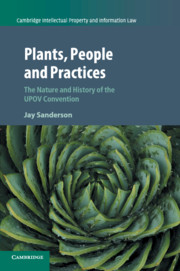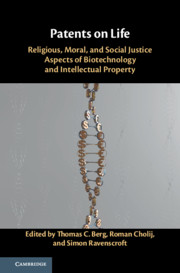Plants, People and Practices
The International Union for the Protection of New Varieties of Plants (UPOV) and the UPOV Convention are increasingly relevant and important. They have technical, social and normative legitimacy and have standardised numerous concepts and practices related to plant varieties and plant breeding. In this book, Jay Sanderson provides the first sustained and detailed account of the Convention. Building upon the idea that it has an open-ended and contingent relationship with scientific, legal, technical, political, social and institutional actors, the author explores the Convention's history, concepts and practices. Part I examines the emergence of the UPOV Convention during the 1950s and its expanding legitimacy in relation to plant variety protection. Part II explores the Convention's key concepts and practices, including plant breeder, plant variety, plant names (denomination), characteristics, protected material, essentially derived varieties (EDV) and farm saved seed (FSS). This book is an invaluable resource for academics, policy makers, agricultural managers and researchers in this field.
- Provides readers with an analysis of the history and nature of the Union for the Protection of New Varieties of Plants (UPOV) Convention's key principles - plant breeder, plant variety, plant names (denomination), characteristics, protected material, essentially derived varieties (EDV) and farm saved seed (FSS)
- Will appeal to those interested in the UPOV Convention, plant variety rights, intellectual property, genetic resources and agriculture
- Useful for scholars, policy makers, intellectual property and government workers, plant breeders, lawyers and NGOs
- Avoids artificial or exaggerated controversies and criticisms over the UPOV Convention
Product details
December 2018Paperback
9781107565548
356 pages
230 × 150 × 18 mm
0.5kg
Available
Table of Contents
- 1. Introduction
- 2. The emergence of the UPOV Convention: a new context of plant breeding and dissatisfaction with existing forms of protection
- 3. UPOV's legitimacy: from members and trade to objectives, structure and norms
- 4. Recognising plant breeders, protecting discoveries
- 5. The proliferation, politicisation and legalisation of plant varieties
- 6. Bringing order and stability to variety denomination
- 7. Science isn't enough: genotypes, phenotypes and the utilitarian nature of plant variety rights schemes
- 8. Expanding protected material: embedding legal language and practices in the UPOV Convention
- 9. Examining and identifying essentially derived varieties: the place of science, law and cooperation
- 10. Saving and exchanging seeds: licenses, levies and speculation
- 11. The nature of UPOV and the UPOV Convention.







